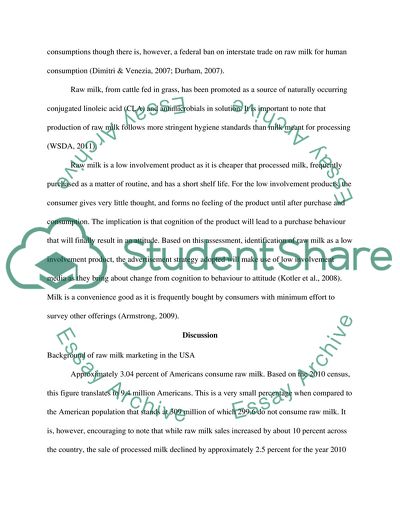Cite this document
(“Raw Milk US National Marketing Strategy Essay Example | Topics and Well Written Essays - 1500 words - 2”, n.d.)
Raw Milk US National Marketing Strategy Essay Example | Topics and Well Written Essays - 1500 words - 2. Retrieved from https://studentshare.org/marketing/1647583-factors-affecting-marketing-strategy
Raw Milk US National Marketing Strategy Essay Example | Topics and Well Written Essays - 1500 words - 2. Retrieved from https://studentshare.org/marketing/1647583-factors-affecting-marketing-strategy
(Raw Milk US National Marketing Strategy Essay Example | Topics and Well Written Essays - 1500 Words - 2)
Raw Milk US National Marketing Strategy Essay Example | Topics and Well Written Essays - 1500 Words - 2. https://studentshare.org/marketing/1647583-factors-affecting-marketing-strategy.
Raw Milk US National Marketing Strategy Essay Example | Topics and Well Written Essays - 1500 Words - 2. https://studentshare.org/marketing/1647583-factors-affecting-marketing-strategy.
“Raw Milk US National Marketing Strategy Essay Example | Topics and Well Written Essays - 1500 Words - 2”, n.d. https://studentshare.org/marketing/1647583-factors-affecting-marketing-strategy.


